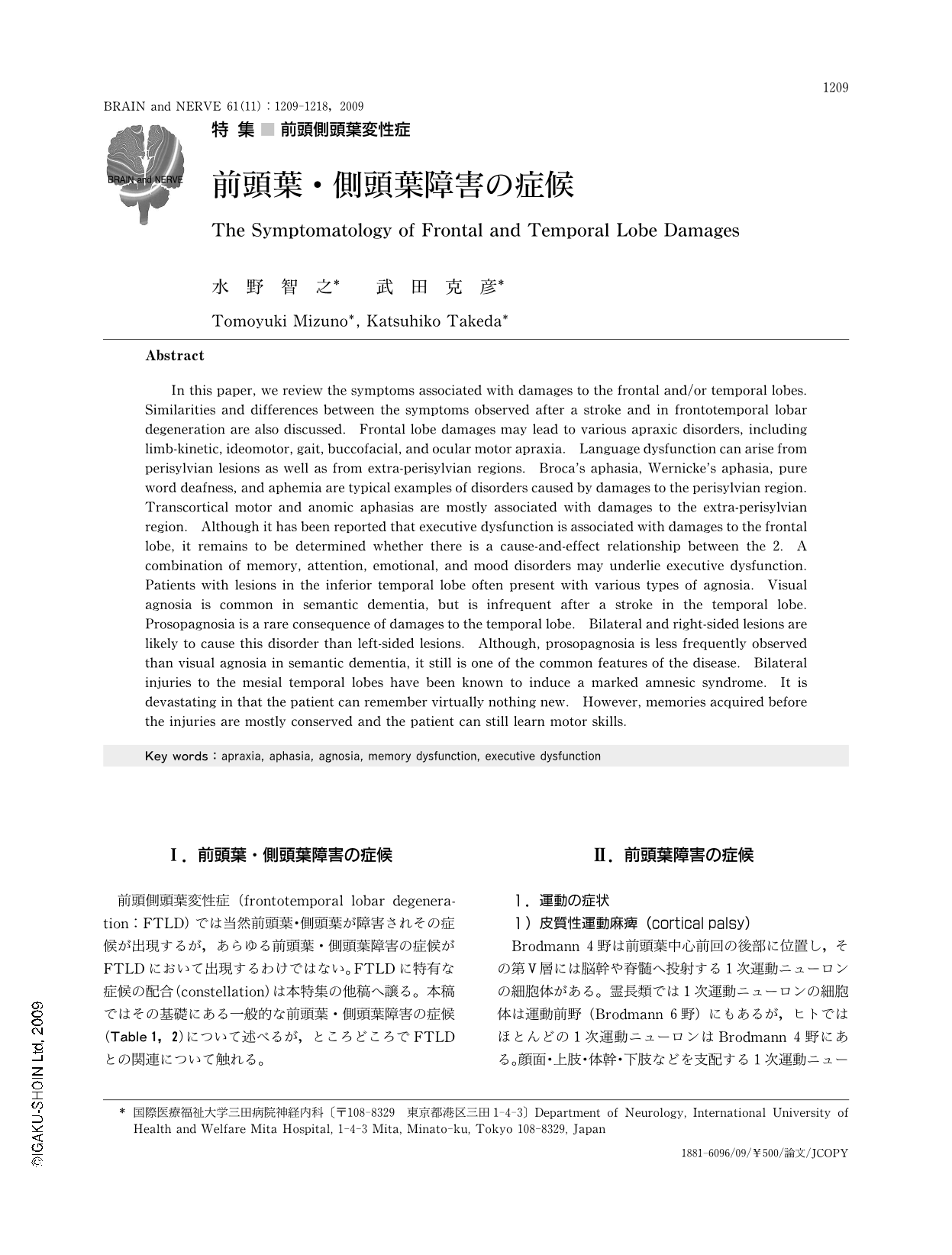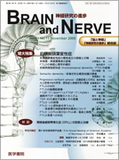Japanese
English
- 有料閲覧
- Abstract 文献概要
- 1ページ目 Look Inside
- 参考文献 Reference
Ⅰ.前頭葉・側頭葉障害の症候
前頭側頭葉変性症(frontotemporal lobar degeneration:FTLD)では当然前頭葉・側頭葉が障害されその症候が出現するが,あらゆる前頭葉・側頭葉障害の症候がFTLDにおいて出現するわけではない。FTLDに特有な症候の配合(constellation)は本特集の他稿へ譲る。本稿ではその基礎にある一般的な前頭葉・側頭葉障害の症候(Table1,2)について述べるが,ところどころでFTLDとの関連について触れる。
Abstract
In this paper,we review the symptoms associated with damages to the frontal and/or temporal lobes. Similarities and differences between the symptoms observed after a stroke and in frontotemporal lobar degeneration are also discussed. Frontal lobe damages may lead to various apraxic disorders,including limb-kinetic,ideomotor,gait,buccofacial,and ocular motor apraxia. Language dysfunction can arise from perisylvian lesions as well as from extra-perisylvian regions. Broca's aphasia,Wernicke's aphasia,pure word deafness,and aphemia are typical examples of disorders caused by damages to the perisylvian region. Transcortical motor and anomic aphasias are mostly associated with damages to the extra-perisylvian region. Although it has been reported that executive dysfunction is associated with damages to the frontal lobe,it remains to be determined whether there is a cause-and-effect relationship between the 2. A combination of memory,attention,emotional,and mood disorders may underlie executive dysfunction. Patients with lesions in the inferior temporal lobe often present with various types of agnosia. Visual agnosia is common in semantic dementia,but is infrequent after a stroke in the temporal lobe. Prosopagnosia is a rare consequence of damages to the temporal lobe. Bilateral and right-sided lesions are likely to cause this disorder than left-sided lesions. Although,prosopagnosia is less frequently observed than visual agnosia in semantic dementia,it still is one of the common features of the disease. Bilateral injuries to the mesial temporal lobes have been known to induce a marked amnesic syndrome. It is devastating in that the patient can remember virtually nothing new. However,memories acquired before the injuries are mostly conserved and the patient can still learn motor skills.

Copyright © 2009, Igaku-Shoin Ltd. All rights reserved.


